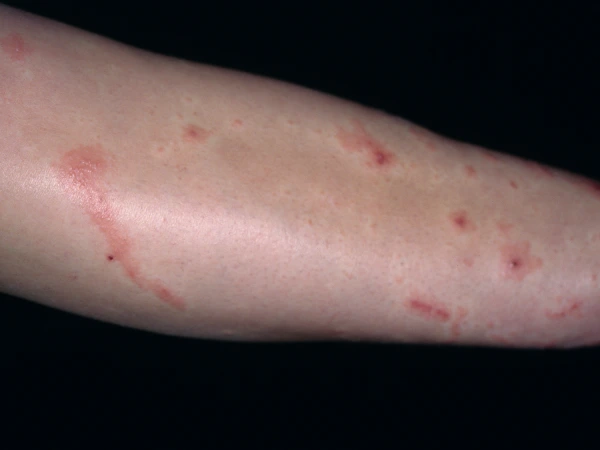Published on
Differential Diagnosis
- Atopic dermatitis
- Arthropod bite or sting
- Urticaria
- Poison ivy dermatitis

Diagnosis
This patient was diagnosed with poison ivy dermatitis (also known as Toxicodendron dermatitis, along with poison oak and poison sumac,). This is a contact dermatitis resulting from a type IV hypersensitivity reaction in sensitized individuals to the oleoresin urushiol. Urushiol is found in most parts of the plants from this genus, which is a member of the Anacardiaceae family.
Learnings/What to Look for
- The Toxicodendron genus is pervasive throughout the continental United States, southern Canada, and Mexico and is mostly found below 5,000 feet of altitude. It can also be found in Asia, Africa, Australia, and New Zealand
- Up to 75% of the North American population is sensitized, and the condition has no predilection based on age, sex, race/ethnicity, or skin type
- Occupational and recreational exposures are prevalent
- Rash begins to appear within 1-2 days after exposure in previously sensitized individuals; in the newly sensitized, it may be delayed 2-3 weeks
- Occult contact may occur from contaminated clothing, gear, or vegetation, even after months have elapsed
Pearls for Urgent Care Management
- After exposure, remove and wash contaminated clothing and wash the entire body with soap
- Over-the-counter treatments include soothing measures such as oatmeal baths, symptomatic relief measures such as calamine lotion, and oral antihistamines to help with itching
- Glucocorticoid therapies such as topical clobetasol or oral prednisone may be effective for severe or persistent cases
Acknowledgment: Image and case presented by VisualDx (www.VisualDx.com/JUCM).
Download the article PDF: A 23-Year-Old with a Pruritic, Spreading Rash
A 23-Year-Old with a Pruritic, Spreading Rash
1 2
